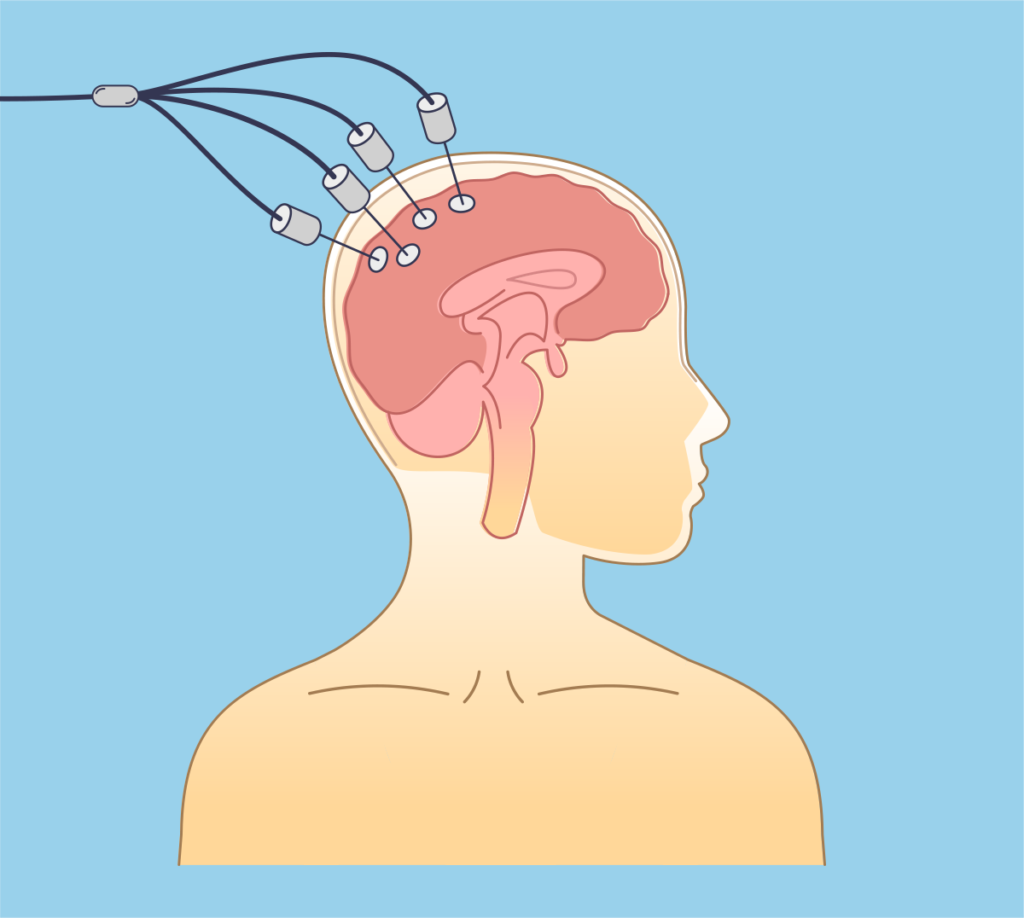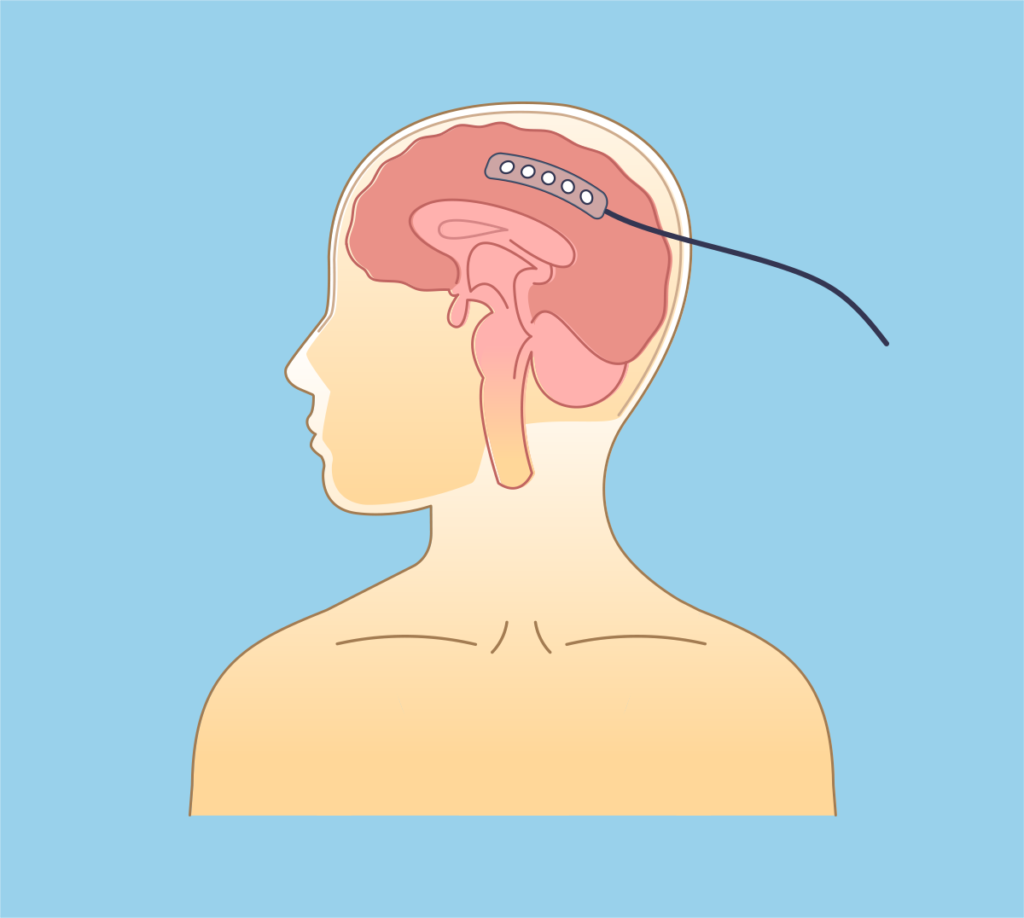If the results from the previous non-invasive tests are still unclear and the information required to determine the best treatment plan is not precise, additional and more invasive tests may be necessary to identify the location and size of the areas the seizures are starting as well as determine the potential effect of surgery on brain functions such as memory and speech. As opposed to an EEG, which records the brain signals using electrodes placed on the scalp, intracranial EEG (iEEG) records brain electric activity either from within the brain (SEEG) or from the surface of the brain (SDG). These additional tests are called Stereo-Electroencephalography (SEEG) and Subdural Grids (SDG).

Stereo-electroencephalography (SEEG)
SEEG is a minimally invasive procedure in which around sixteen depth electrodes are implanted and used to record brain electric activity directly within the brain. The objective of SEEG is to determine the area where the seizures start and the brain regions involved in producing and disseminating seizure activity.
Subdural Electrodes (SDG)
Subdural electrodes are implanted on the surface of the brain to record electric brain activity. They exist in different configurations: electrodes are grouped in a column (strips), or in rows and columns (grids). The objective is to determine the area where the seizures start and the brain regions involved in producing and disseminating seizure activity.

These invasive tests require trained medical providers and must be performed in a sterile and well-equipped operating room. Because careful monitoring is needed, additional days of stay at the hospital’s EMU are necessary. Thanks to the data gathered during your stay at the EMU, the multidisciplinary team will be able to plan the next steps for your treatment.
SEEG and SDG are safe procedures; however, it is important to understand that they may carry potential risks including infection, bleeding, and side effects such as temporary weakness or paralysis of parts of the body. Both, SEEG and SDG have different benefits and risks, which should be discussed with the surgeon and healthcare professionals in the team.



